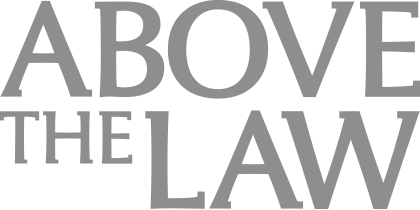The Fall Of Systemic Deception At Law Schools
We long ago declared victory for law school transparency. Here's why.
 Last week, Anna Alaburda lost her lawsuit against Thomas Jefferson School of Law. From what one juror said of deliberations, the jury only considered deliberate falsification of the data underlying the statistics she consulted before law school. Systemic deception by law schools, blessed by the ABA, was not on trial. While I am disappointed in the result — I think it would have been an important symbol — I want to talk about the changes that we’ve seen over the last six years on the transparency front. We did not win on every count, but we long-ago declared victory. Here’s why.
Last week, Anna Alaburda lost her lawsuit against Thomas Jefferson School of Law. From what one juror said of deliberations, the jury only considered deliberate falsification of the data underlying the statistics she consulted before law school. Systemic deception by law schools, blessed by the ABA, was not on trial. While I am disappointed in the result — I think it would have been an important symbol — I want to talk about the changes that we’ve seen over the last six years on the transparency front. We did not win on every count, but we long-ago declared victory. Here’s why.
The Problem
Since long before the Great Recession, law schools and the ABA maintained a tapestry of fictional statistics that deceived the public. Schools advertised employment rates north of 90 percent without disclosing that a part-time waiter at Denny’s counted exactly the same as a partner-track associate at Wachtell. Schools also advertised glossy salary statistics without survey response rates or meaningful context.

Happy Lawyers, Better Results The Key To Thriving In Tough Times
When thinking through consumer protection, you take the consumer as they are. Here’s what I wrote a few weeks ago for the National Law Journal:
To say [Alaburda] should have known better is to miss the cultural context in which she made her decision. Until only recently, “education debt is not bad debt” dominated career advice that college provides a positive return on investment. Law school especially has been portrayed as a ticket to financial security or even wealth. Students are told to and, indeed, want to trust the institutions they’re seeking to attend for higher education. To mistrust schools, your advisers and common wisdom required a divergent leap of faith.
Alaburda decided to attend law school before The New York Times, Wall Street Journal, National Public Radio, The Washington Post and hundreds of other publications covered misleading employment statistics. Coverage of law school deception started in earnest in April 2010 in this very publication — nearly five years after Alaburda started law school. That fall, after decades of conditioning, law school enrollment peaked while thousands of recent and not-so-recent graduates began to realize they were not alone in feeling duped. Against an overwhelmingly positive cultural backdrop, they misplaced their trust.
The fictional statistics confirmed applicant expectations — law school is a ticket to financial security — and those who knew better did nothing. Career-center staffers had ample access to contradictory information. They helped students find jobs, collected data about those students after graduation, and received from NALP each year a detailed breakdown of their school’s job statistics. Still, much of the deception was unintentional because law school administrators were afflicted by the same cultural conditioning that afflicted applicants — typical for systemic problems.
The ABA Changes The Accreditation Standards
Sponsored

Generative AI at Work: Boosting e-Discovery Efficiency for Corporate Legal Teams

Happy Lawyers, Better Results The Key To Thriving In Tough Times


Curbing Client And Talent Loss With Productivity Tech
My organization released our white paper on the problem in April 2010. By June, the ABA’s committee on reviewing the accreditation standards had prioritized revising the consumer protection standard, Standard 509. In December 2010, the ABA’s committee for data collection held a hearing.
Ultimately, the ABA made three types of changes that were fully in effect for the class of 2011 (first published in April 2012):
1) New Disclosure Requirements
Schools are now required (under Standard 509) to disclose the employment status of every graduate prominently on their websites. For those employed, schools must report time (full or part), term (long or short), job type (bar required, JD Advantage, professional, non-professional), employer type (law firm, business, clerkship, government, public interest, education), whether the job is funded by the law school, and the top three job locations (states).
Now schools must share, for example, the percentage of a school’s graduating class employed in long-term, full-time jobs that require bar passage and that are not paid for by the school.
2) Clearer Disclosure Prohibitions
Schools are prohibited (under Standard 509) from providing false, misleading, or incomplete information. Schools may not, for example, publish salary statistics without response rates.
Sponsored

Law Firm Business Development Is More Than Relationship Building

Curbing Client And Talent Loss With Productivity Tech
3) Timely Resources
The ABA now publishes the Standard 509 employment reports all in one place. The ABA used to take forever on this. Now it’s a very fast turnaround.
Law School Disclosure Norms Change
The ABA sets the floor for disclosure, but schools can, should, and do exceed the minimum requirements. We encourage these disclosures in a number of ways. For the class of 2010 and class of 2011, we published our Transparency Index. We worked directly with more than half of law schools to get them in compliance with the ABA Standards and to increase the amount of public consumer information.
We also publish the NALP Report Database. Each summer, NALP-member law schools receive a report from NALP that summarizes employment data for the second-most recent graduating class. The employment data contained in the NALP report are highly valuable to prospective students. Because NALP already collects the employment data and distributes the report to schools, there is no cost associated with publishing the reports. Starting with the class of 2010, LST requested that schools make these reports available to the public. At the time, no school made its report public.
As I reported on ATL a few months back, law schools are more transparent than ever. More than 60% of schools publish their NALP reports today.
U.S. News Advancements
For a long time, U.S. News was the best source for job and limited salary statistics. However, there were significant problems that made those disclosures misleading. U.S. News did not disclose overall response rate, which made the employment rates misleading. Moreover, U.S. News did not disclose the salary response rates.
Rather quickly, U.S. News got on board with the transparency movement and published the data we requested. Once the ABA changed its requirements, U.S. News quickly integrated the new data into their (horribly flawed) methodology. You can’t make a silk purse out of a sow’s ear, but law schools do respond to the incentives caused by the rankings methodology.
There’s still more to do, and we are working closely with several law schools on new initiatives that will benefit applicants trying to make informed decisions about whether and where to attend law school. At this point, many of the changes are quite incremental because the heavy lifting has already been done. I’m incredibly proud of the contributions my organization made to the progress, and I believe it’s a testament to the power of the internet to democratize efforts of voices that otherwise probably would have remained silenced.
Kyle McEntee is the executive director of Law School Transparency, a 501(c)(3) nonprofit with a mission to make entry to the legal profession more transparent, affordable, and fair. LST publishes the LST Reports and produces I Am The Law, a podcast about law jobs. You can follow him on Twitter @kpmcentee and @LSTupdates.







